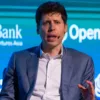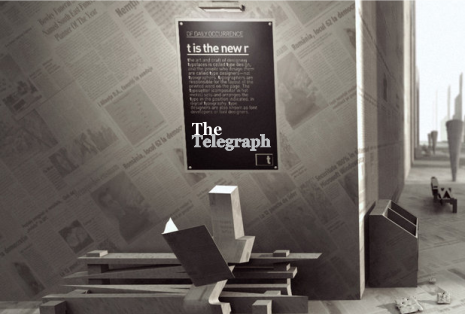OpenAI has been at the centre of a Silicon Valley corporate drama since the recent sacking of CEO Sam Altman
The firing of Sam Altman as chief executive of OpenAI on Friday took the tech world by surprise and has triggered a Silicon Valley corporate drama.
Altman is not just the CEO of the company behind the ChatGPT artificial intelligence chatbot. He is also the figurehead of a revolution in AI that has enthralled the public and investors but also alarmed industry insiders and experts.
Here we answer some key questions about what’s been going on and why it matters.
What is OpenAI?
OpenAI is the San Francisco-based company behind ChatGPT, a chatbot that has wowed users with its ability to produce highly convincing text responses to human prompts – from writing academic essays to creating recipes and summarising lengthy documents. It has also developed Dall-E, a tool that produces images from text prompts. Before last week’s events, OpenAI was reportedly in talks to complete a fundraising deal that would have valued the business at $80bn (£64bn).
Altman, its 38-year-old boss, was synonymous with the success of ChatGPT, which attracted 100 million users in two months after its launch on 30 November 2022.
Why was Altman fired?
OpenAI was founded as a non-profit organisation and its board oversees a commercial subsidiary of which Altman is CEO. On Friday the board announced that it had fired Altman because “he was not consistently candid in his communications with the board” and was thus “hindering its ability to exercise its responsibilities”.
The board gave no further details about the communications in question. Altman’s ultimate successor as interim CEO, Emmett Shear, a co-founder of the Twitch streaming platform, said the sacking was not due to any disagreement over safety. Experts and tech professionals have voiced concerns that companies such as OpenAI are developing AI systems too rapidly and that such technology could ultimately pose an existential threat.
However, it was reported that Altman has held discussions with Apple’s former design chief Jony Ive about building a new AI hardware device. He is also reportedly trying to raise funds for a new venture producing chips that develop and operate powerful AI systems.
What has happened since?
In a weekend of corporate drama, OpenAI’s investors, led by the biggest, Microsoft, attempted to reinstate Altman. The move had the support of OpenAI staff including the then interim CEO, OpenAI’s chief technology officer Mira Murati. Murati has since been replaced by Shear, OpenAI’s third CEO in three days.
On Monday, Microsoft announced it had hired Altman and his close colleague, the former OpenAI president Greg Brockman, to head a new advanced AI research unit.
What does this mean for OpenAI?
OpenAI’s 700-strong workforce is in uproar about Altman’s sacking. In an open letter to the board of directors published on Monday, more than 600 staff, including Murati, threatened to resign and join Microsoft unless the board quit and reinstated Altman and Brockman (who had resigned after he and Altman were axed from the board). One of the signatories was Ilya Sutskever, OpenAI’s chief scientist and one of the four remaining board members. Sustkever said on Monday he “deeply” regretted his role in Altman’s departure.
Could Microsoft buy OpenAI?
Money would not be a major issue for Microsoft, even with OpenAI’s mooted $80bn price tag. However, competition authorities in the US, the UK and the EU would be expected to take a close look at consolidation in the nascent market for generative AI. Microsoft has only just pulled off the acquisition of the videogame company behind Call of Duty, Activision Blizzard – a takeover that was heavily contested by regulators – and would face an even tougher battle with OpenAI, in which it owns a 49% stake.
Will the furore slowdown AI development?
Microsoft has signalled that it is a ready home for OpenAI’s disgruntled talent and has already put Altman and Brockman to work. Its CEO, Satya Nadella, indicated that other OpenAI staff had already joined the top duo, amid reports that a trio of senior researchers had quit the ChatGPT developer in the wake of the boardroom coup. If Altman does not return to OpenAI, then it seems the work on advanced AI will continue under Microsoft directly.
Altman is committed to building artificial general intelligence, the term for an AI system that can carry out a variety of tasks at or above a human level of intelligence. In an interview this month he said: “The vision is to make AGI, figure out how to make it safe … and figure out the benefits.”
OpenAI still owns the powerful models behind ChatGPT. But Elon Musk’s latest venture, xAI, has shown how quickly powerful new models can be built. It unveiled Grok, a prototype AI chatbot, after what the company claimed was just four months of development.


